How Does 4-2 Volleyball Rotation Work (Diagrams included)
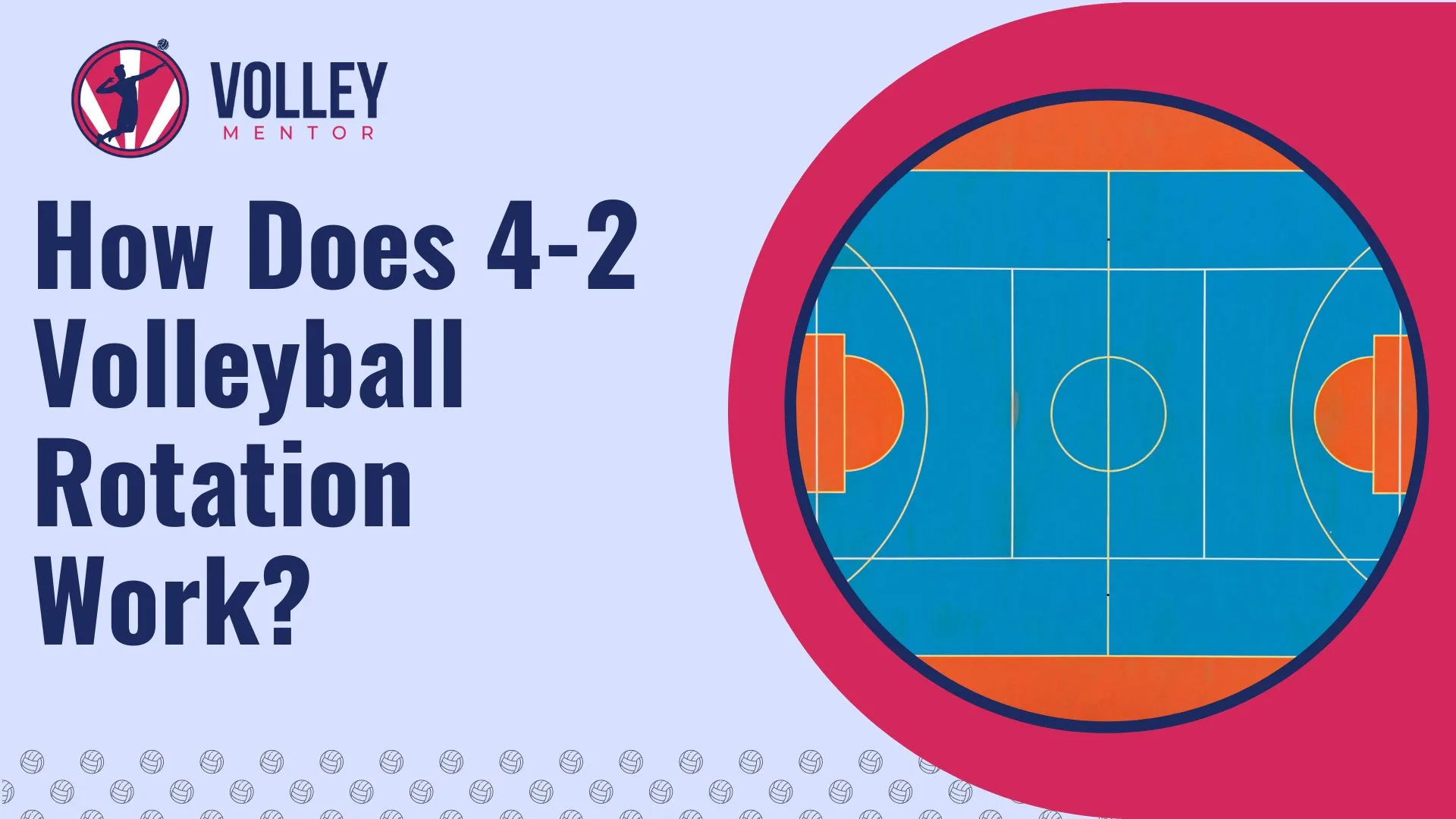
The 4-2 rotation is the most accessible and straightforward rotational system for those just starting their volleyball journey.
This setup is ideal for newbies and provides a solid foundation for mastering the essentials of positional play.

However, it is not used in professional play like 5-1 or 6-2 rotations because experienced teams can easily defend it, and also, it is less versatile than other rotations.
Key Takeaway: In the 4-2 volleyball rotation, the team utilizes four hitters and two setters across three rotations, ensuring that two attackers are always ready at the net. The beginner teams especially favor this formation for its straightforward structure and easy implementation.
In this guide, I have focused on explaining the ins and outs of the 4-2 rotation system along with relevant diagrams.
It’s helpful for new players and those wanting to learn more about how this foundational rotation strategy works.
What is the 4-2 Volleyball rotation?
The ‘4’ and ‘2’ in the 4-2 volleyball rotation represent the number of hitters and setters on the court respectively.
It means two attackers are in the front row, which helps the team with many scoring options.
In this rotation, it’s essential to remember two specific court positions: one for playing in the front row and another for playing in the back row.
This formation has three rotations, and the players rotate around the court in a 4-2 pattern.
The simple pattern makes it easy for players to know where they should be precisely on the court.
Advantages of using 4-2 formation
As a coach, I have observed many benefits of 4-2 formation.
Let me discuss some of the noticeable points with you.
1) Easier to Understand
The 4-2 rotation is easier to understand and implement, as two setters are on the court.
It means there are two possible positions for the setters, and they know exactly where they are supposed to be on the court throughout the volleyball game.
This formation is helpful for the recreational and youth teams who need help understanding the rotational complexities.
Once they are comfortable with it, it becomes simpler to understand high-level rotational formations like 5-1 and 6-2.
2) Enhanced Defensive Capabilities
This rotation formation has two players in the back row, making it ideal for enhanced defense capabilities.
It increases the defense options and makes scoring difficult for the opposing team.
For instance, if your team receives the serves at the back row and it is difficult to pass over, your setter can move into the back row and set the ball for better defense.
3) Dynamic Setter Offensive Contributions
With a 4-2 rotation system, the setter is always at the front and can both set and hit the ball.
This tactic makes the team harder to defend against and offers more ways to score.
4) Optimal Setter Positioning
It is the most significant advantage of the 4-2 rotation, enabling the setters to be in their ideal position on the court.
They are always in the front row and closer to the net.
The setters can set the ball better, which results in more scoring opportunities for their team.
They can see the opposing team’s hitters easily and can set the ball to the best hitter of their team.
I have explained the setters’ responsibilities in 4-2 rotations in a more straightforward table below.
| Setter 1 | Setter 2 |
| Primary setter for the team | The secondary setter provides backup |
| Coordinates offensive strategies | Assists in maintaining offensive rhythm |
| Sets the ball accurately for attackers | Ensures smooth transition in setting |
| Communicates with teammates on the court | Assists in defensive efforts |
| Executes quick tempo plays | Provides support during blocking |
5) Simplified Serve Receive Implementation
This rotation simplifies the serve-receive implementation because two players are always in the back row, ready to pass the ball.
This approach can help the team gain more successful offensive possessions and makes it easier to receive the serve from the opposing team.
If a team is more consistent on the serve-receive, it can give them more diverse options on the court, which ultimately helps win the game.
Disadvantages of a 4-2 formation
I have observed some cons of this approach, which I would like to share.
1) Predictability in Offensive Strategies
I mentioned before that this rotation helps a team to do better offense, but at the same time, it is a disadvantage, too.
The reason is that the 4-2 rotation is easily predictable by the opposing team, and it is no longer a hassle to predict your competitor team’s next move.
2) Reduced Blocking Opportunities
In 4-2 rotations, there are always two setters on the court, so this approach reduces blocking opportunities, too.
It means that it is easier for the opposing team to score as they have fewer players to block.
The opposing team knows that in this formation, the blocker of your team is only in the front row sometimes.
So, they can hit the ball to a spot where your blocker is absent.
In return, you can lose the point.
3) Dependency on Setter’s Skill
If your setter is not efficient and skillful at setting, it will be difficult for your team to score maximum kills because, in this formation, you are dependent on the skills of the setter.
Additionally, if you’re using the 4-2 rotation in college volleyball, choose a setter who excels at setting and reading the defense.
Otherwise, it can be challenging to secure victories in matches.
Serve Rotations (with diagrams)
To explain how the serve rotations work in 4-2 rotations, I have used the diagrams below to demonstrate the serving, the shuffling process, and clockwise rotations.
As you can see I have placed the setter in position 1 as the server and the other setter in position 4.
Your coach can change the position of the players, but for this guide, I am using it as a base formation.
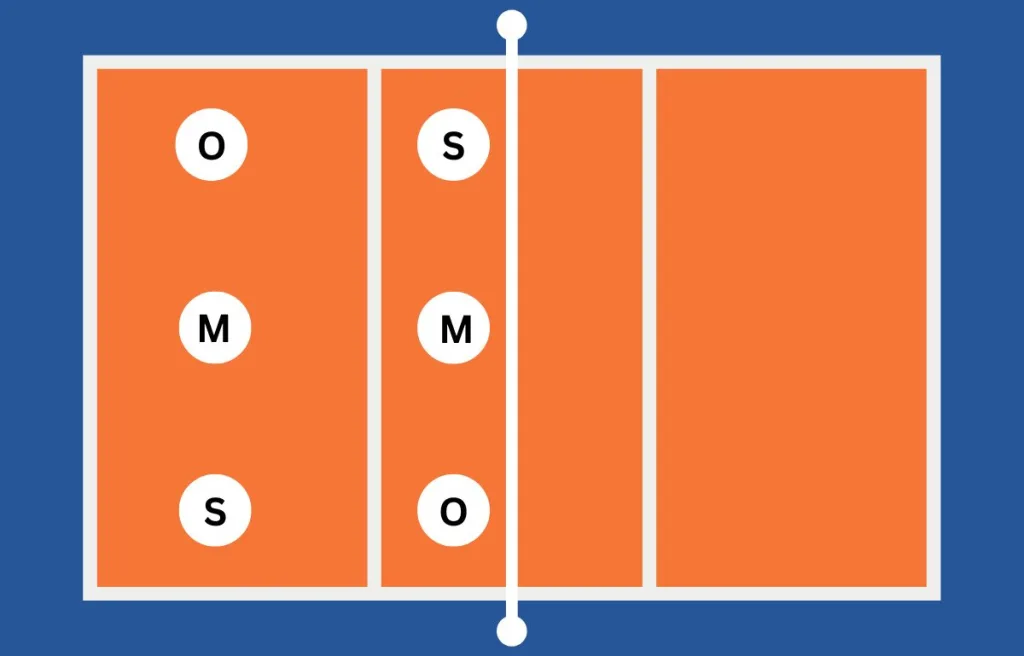
Rotation 1
Rotation 1 is the default rotation of team A when they do the serve.
It is the rotation that all teams start in at the beginning of the game.
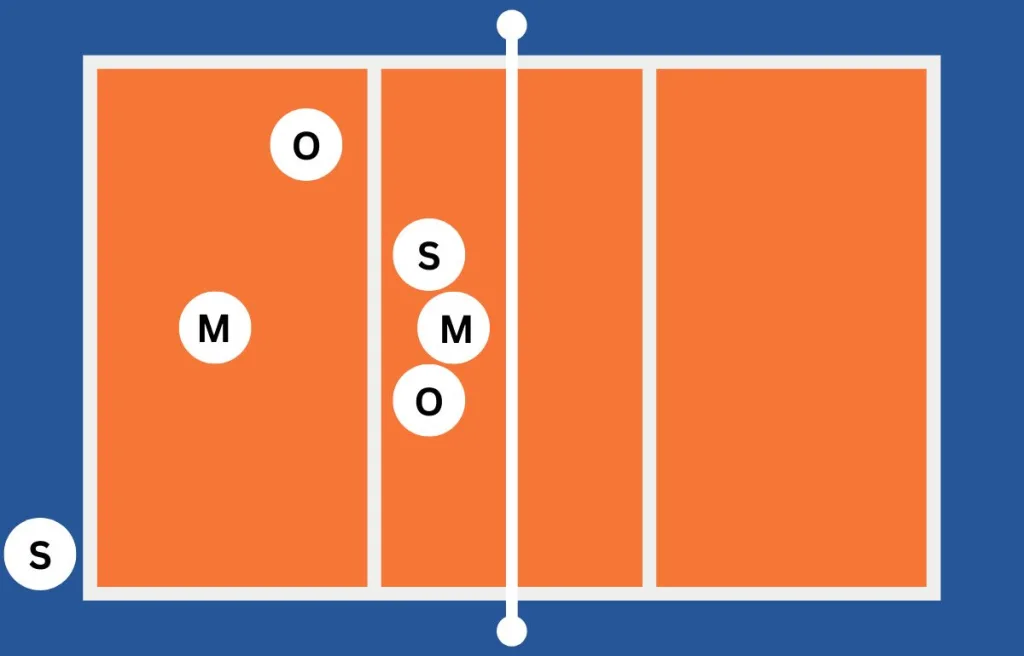
The above diagram shows the stack of the players and how they stand on the court.
The setter is ready to serve the ball, and in the baseline, the three players (setter, middle hitter, outside hitter) are standing close to each other.
The setter and the outside hitter in the baseline are ready to change their positions after the serve.
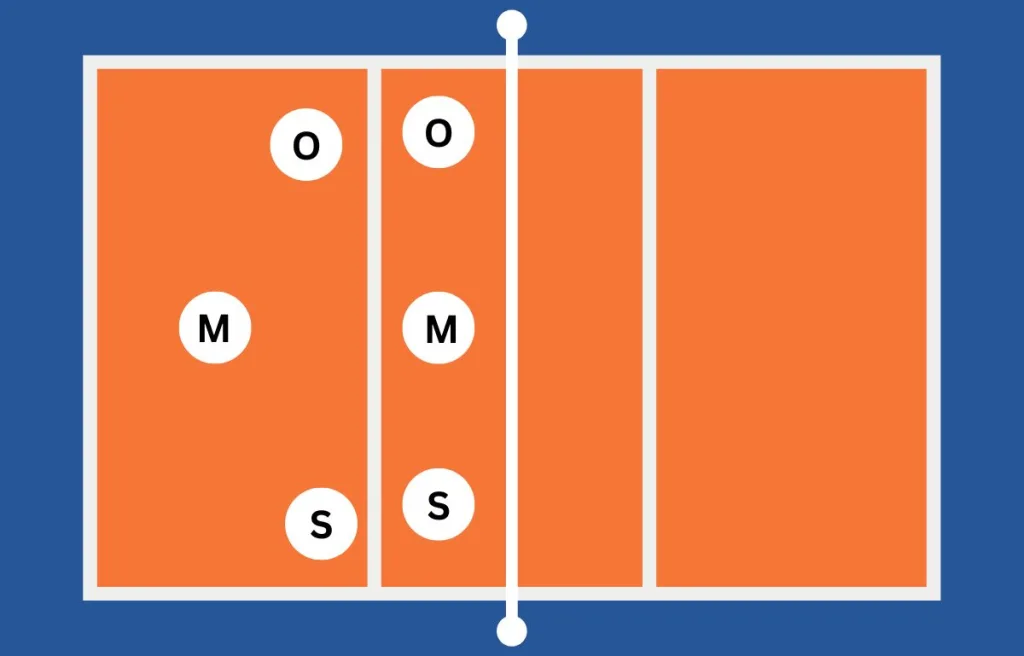
The above diagram shows that the setter and the outside hitter have exchanged places after the serve.
The middle blocker comes closer to the net to block any attack by the opposing team.
Discussing the back row players is unimportant here as it depends on the coach, and the formation could differ.
Let’s assume that team A, who did the serve, won the point.
All the players return to their base position as shown in diagram 1.

The Rotation 2 will start, and the players will move clockwise.
The formation will be as follows.
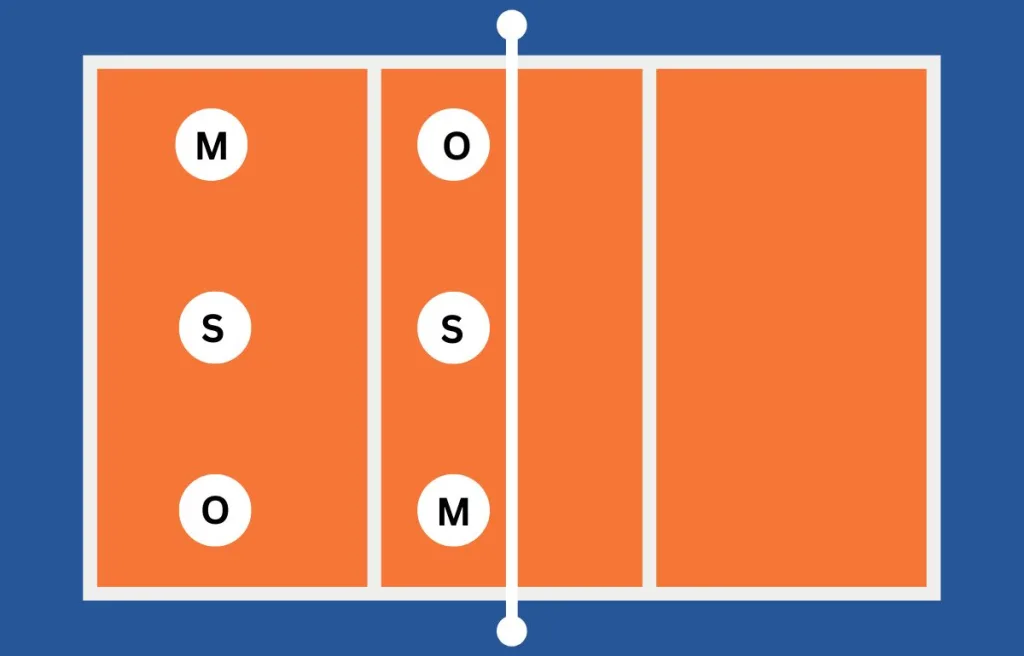
Rotation 2
The stack of the players after rotation 2 will be in such a way that “O” will be ready to serve, and “M” and “S” in the front row will stand close to each other so that they can quickly switch after the serve.
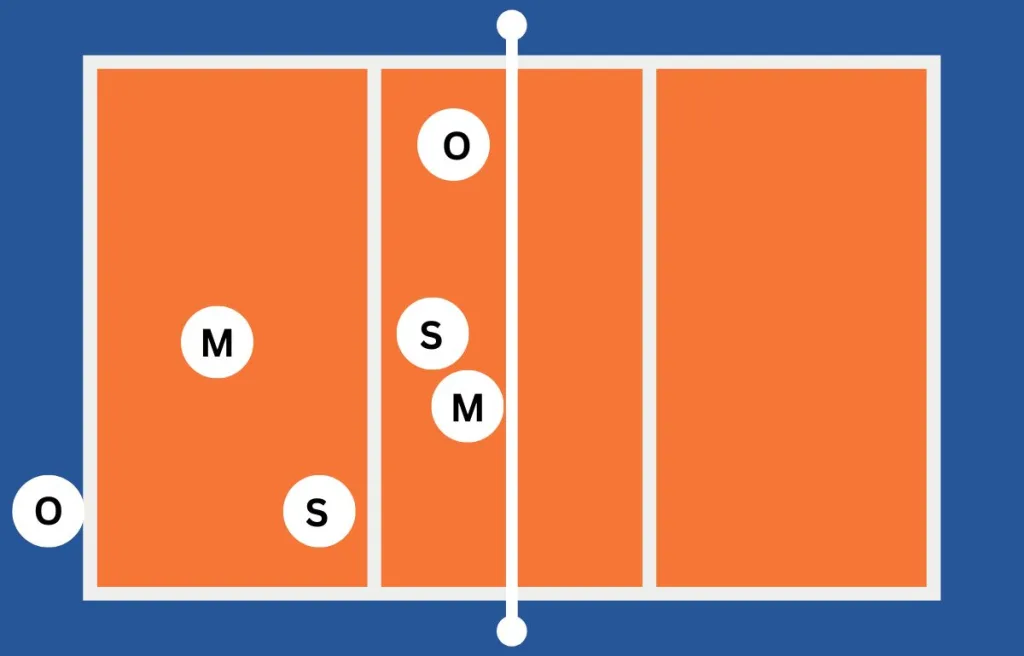
An outside hitter serves the ball and comes immediately to position 5 on the court after serving.
The setter and the middle exchange their positions, and the outside remains in his position as before(shown in the diagram below)

Team A, who did the serve, won again.
The players came to their base position, as shown below.

Now, rotation 3 started, and the players will move clockwise.
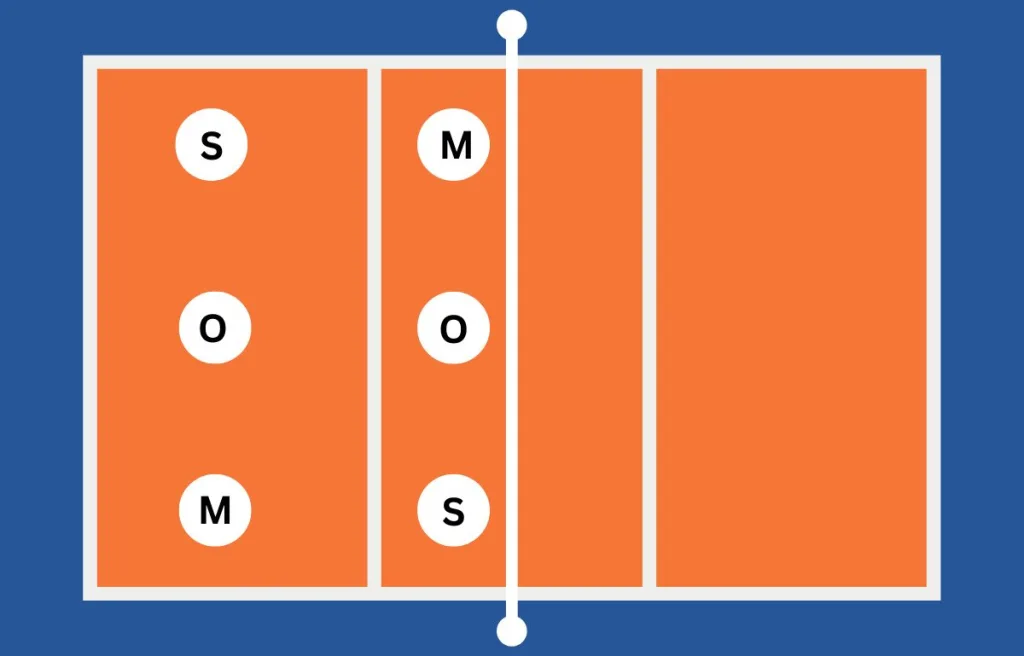
Rotation 3
The stack of the players after rotation 3 will be as follows:

The middle does the serve, and the positions would be as follows:
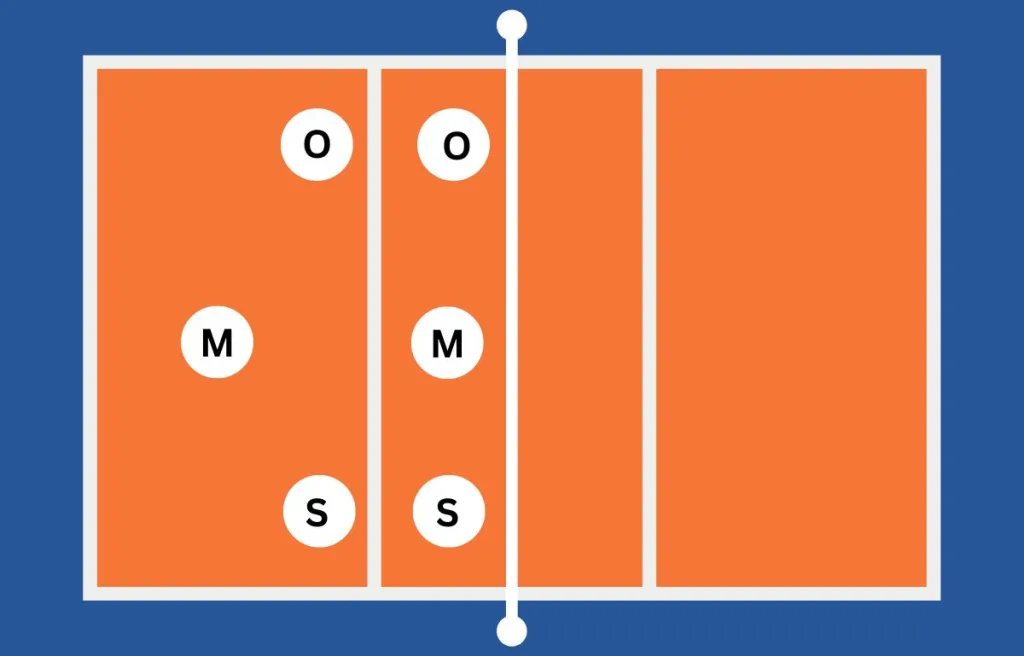
If team A wins the point again, the players come to their base positions.
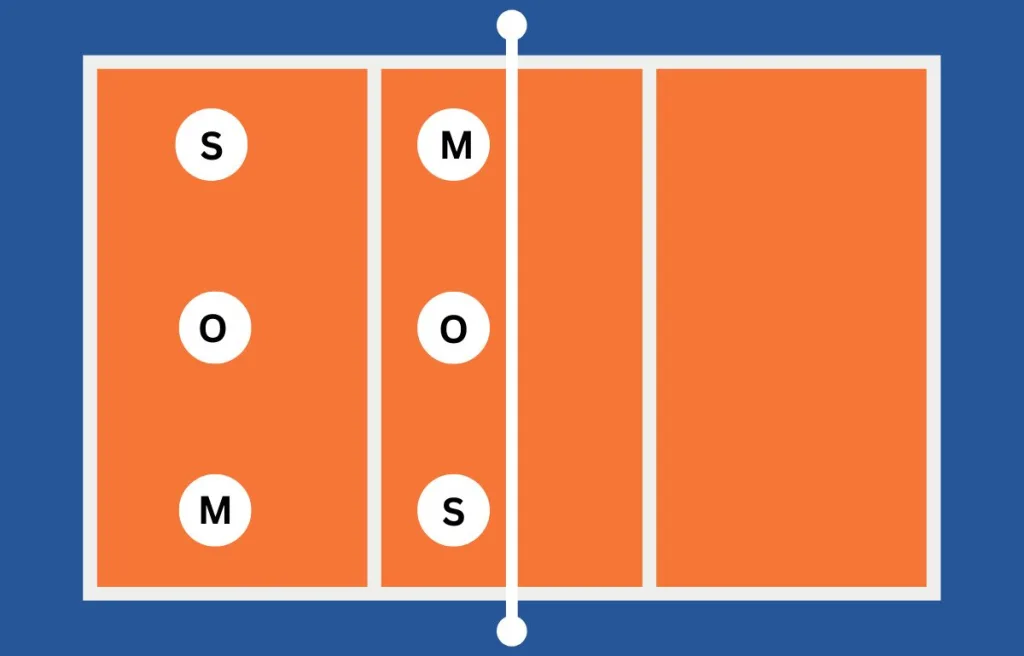
The rotation A will start again, as there are only three rotations in a 4-2 formation.
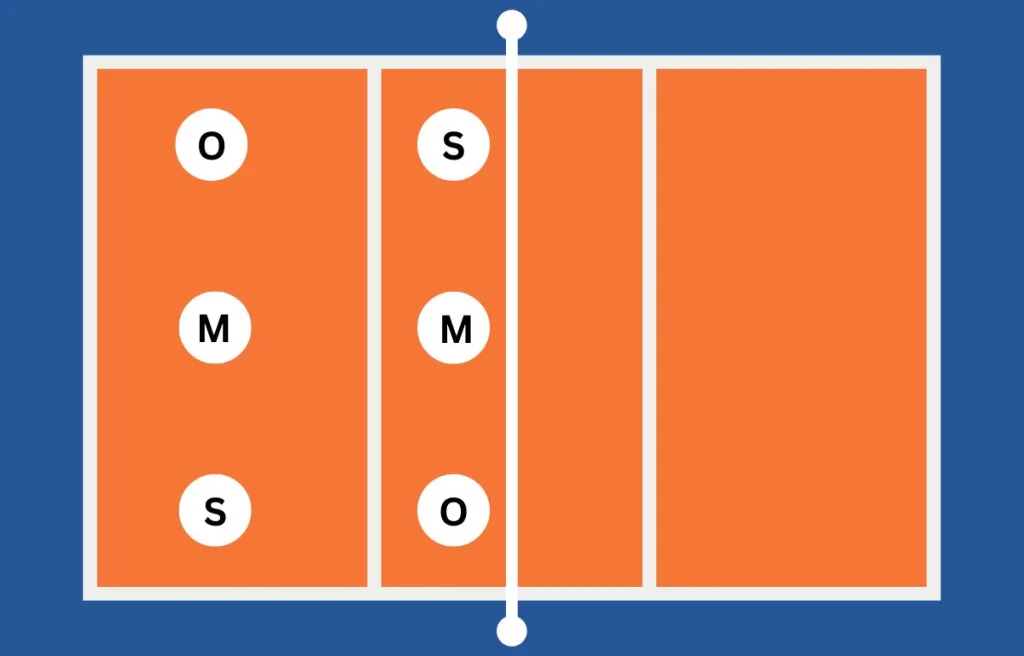
Serve Receive Rotations (with diagrams)
As you have seen in the serve rotation, every player gets a chance to serve.
In the same way in serve receive rotations, every player can receive the serve.
I have also made diagrams to explain the 4-2 serve receive formation so that the concept is crystal clear to you.
The setter will be in the correct front position, which is ideal for him.
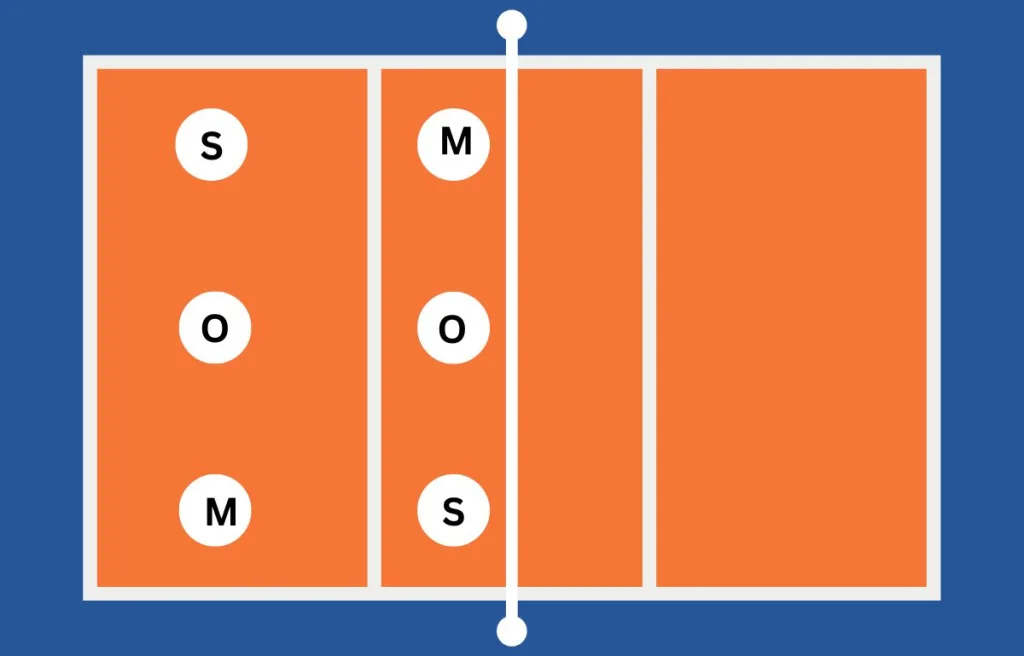
Rotation 1
The stack of the players will be in such a way that the middle and the outside are close to each other so that they can switch easily.
In the back row, the middle and the setter will exchange positions.

The serve is now received, and the players exchange their positions.
Note that the setter in the front row stays in his ideal position.
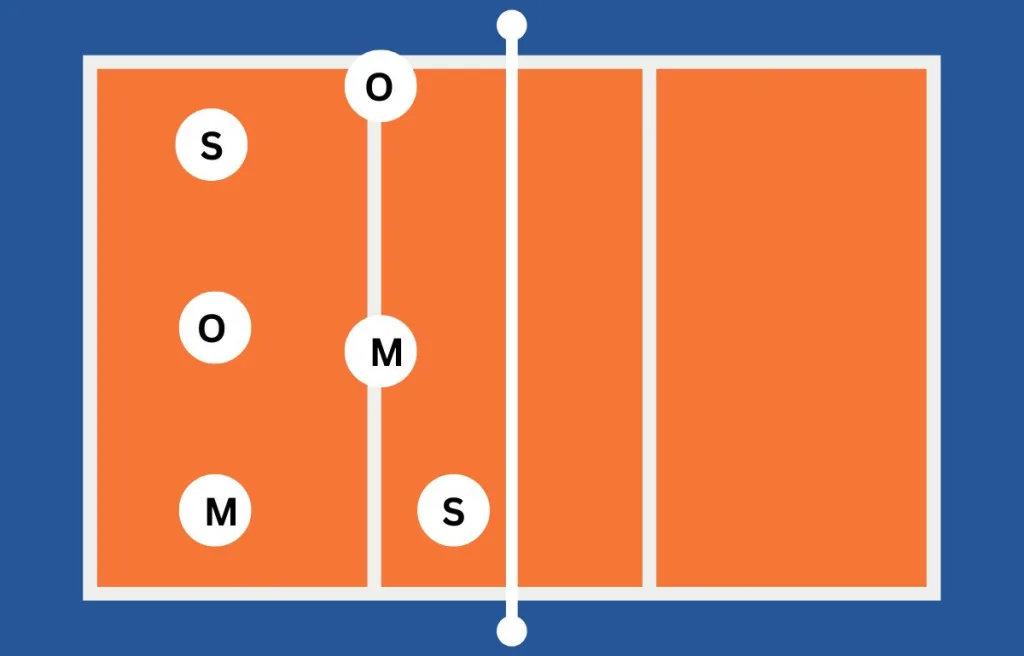
Now assume that team A, who receives the serve, has won the point.
They will return to their base position, as shown below.
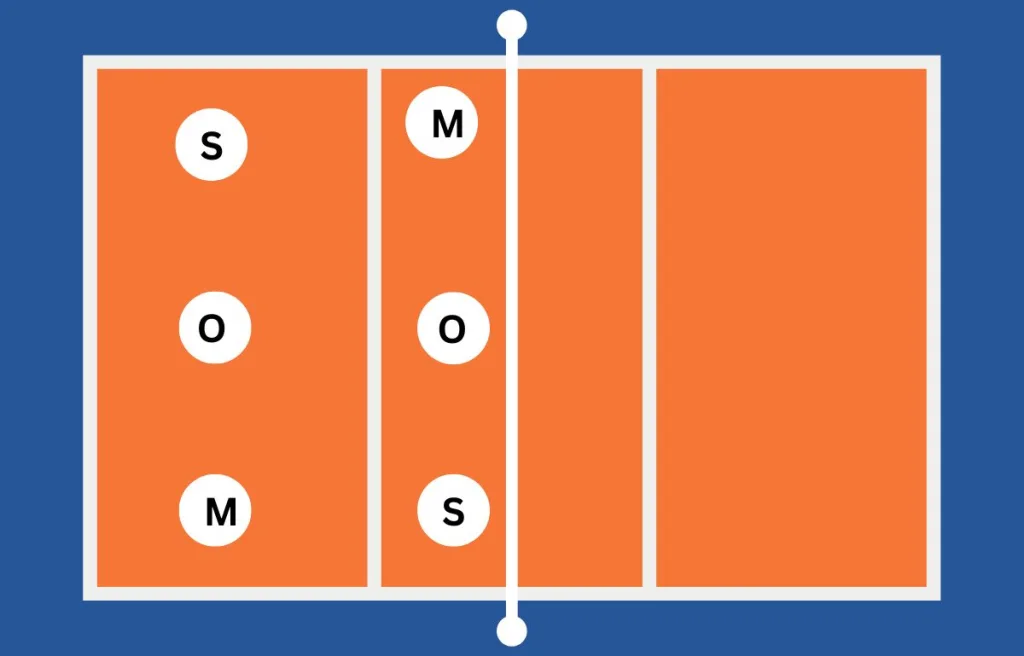
The 2nd rotation starts now in the clockwise direction.
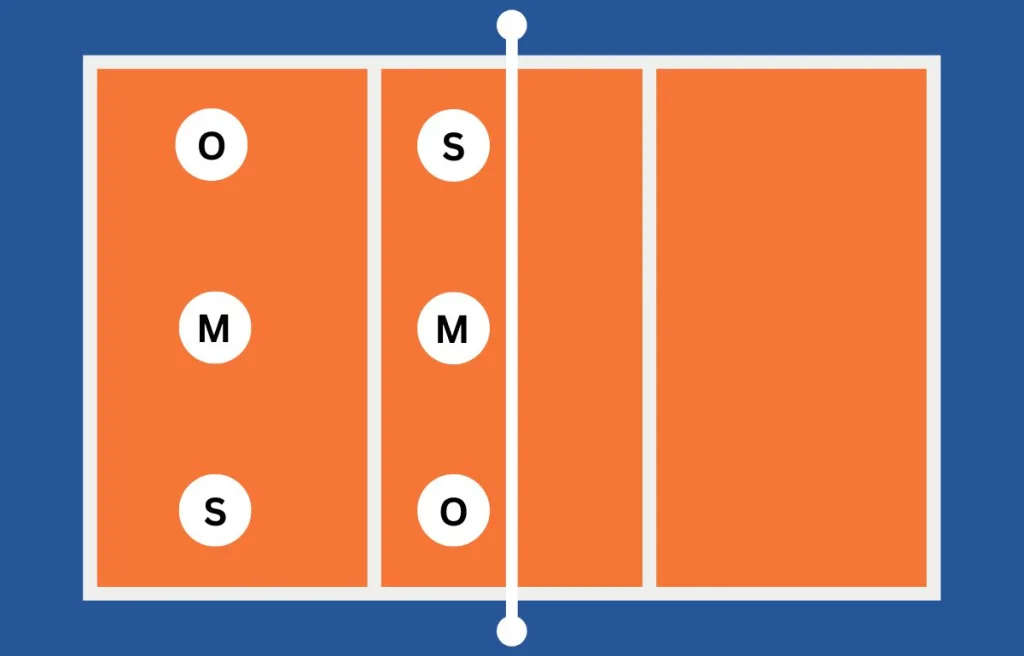
Rotation 2
After rotation 2, the players will form on the court in a way that the setter, middle, and outside in the front row stack with each other so that the setter and outside can quickly swap with each other.
In the back row, the setter is already in the correct position, and the outside and setter are ready to swap their positions.
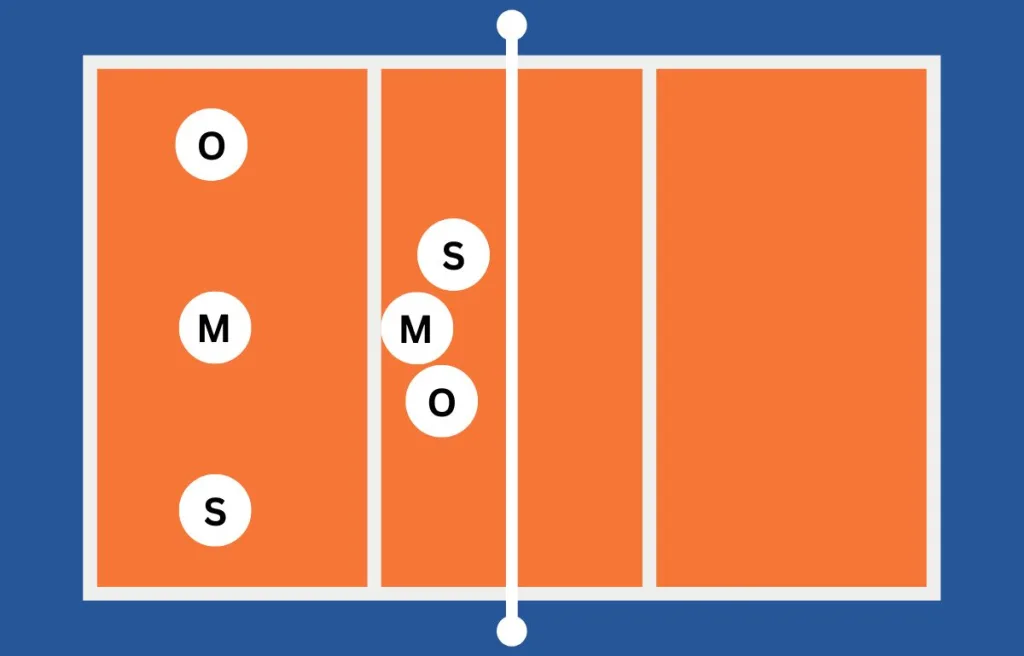
The serve is received, and the players quickly exchange their positions to form the below formation.
The setter comes to his ideal position (right front), and the outside goes to the front left.

Team A won the point again from team B (who did the serve).
The players will come to their base position.

Now, they rotate clockwise again, and the rotation 3 begins.
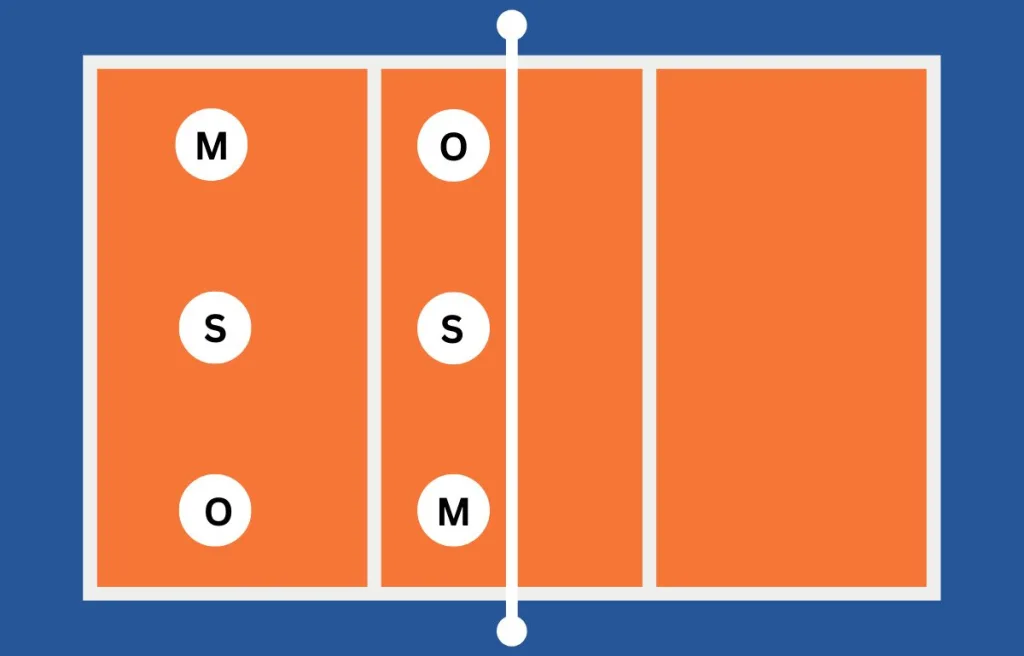
Rotation 3
After rotation 3, the players will stack so that the setter and middle can easily swap in the front row.
Also, the setter and the outside are ready to switch positions in the back row.

As soon as the service is received, the players swap their places.
Only the outside in the front row and the middle in the back row don’t move their positions.
As you can observe in the diagram below, the setter in the front row comes to his ideal position, which is the goal of 4-2 rotation.
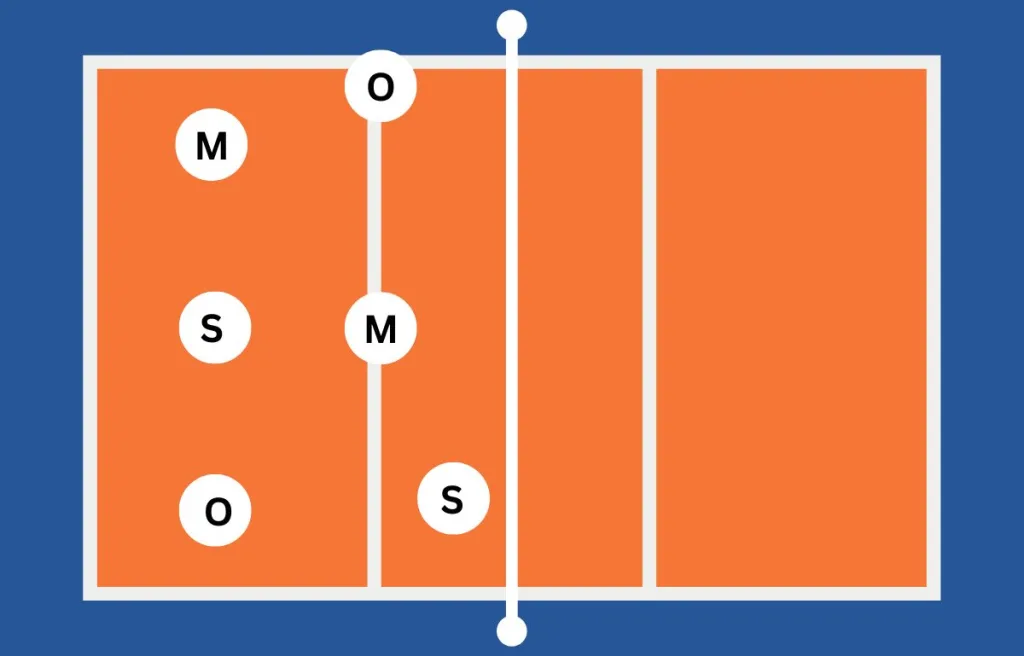
Luckily, team A won the point again.
The same story gets repeated.
The players return to their base positions.
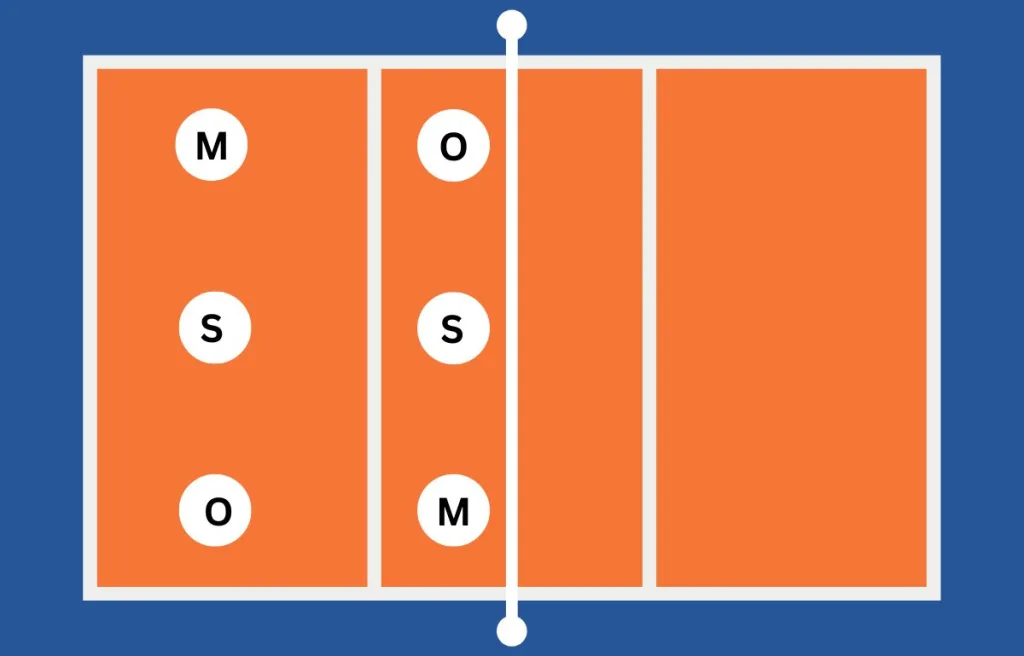
Rotation 1 is executed again.
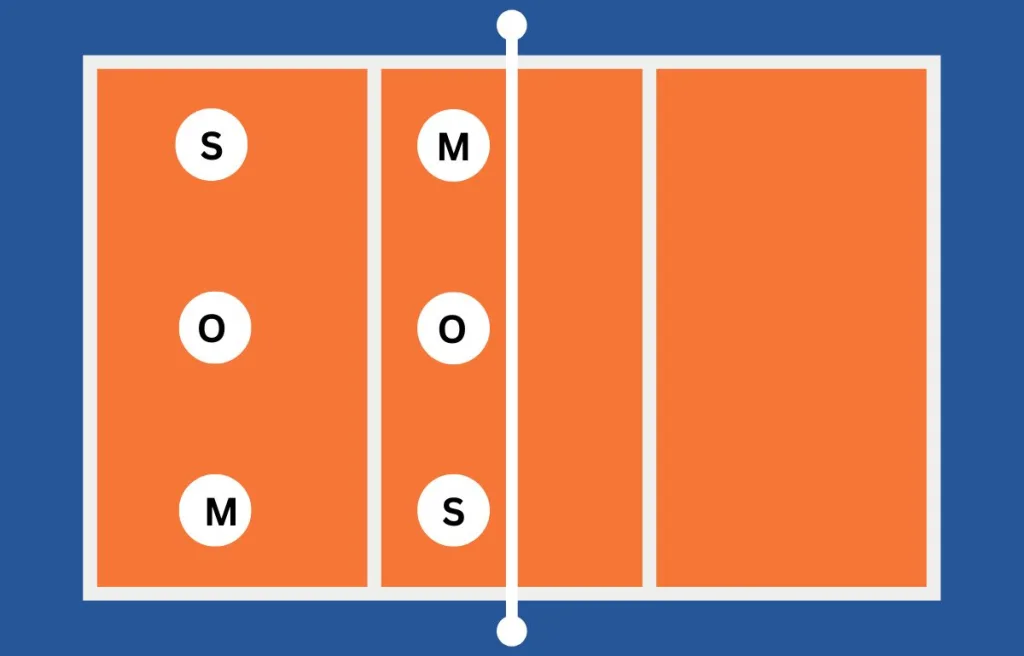
4-2 Volleyball Rotation pdf Printable
Looking for a handy guide to keep on your clipboard?
I’ve got just the thing.
Grab my easy-to-download cheat sheet summarizing all the serve patterns from the 4-2 rotation covered in this article.
Hit the button below and download your PDF.
It’s clean, concise, and perfect for printing or sharing with your team.
Need the essential serve receive diagrams at your fingertips?
Just one click, and you’ll have a printable PDF.
It’s ideal for coaches and players to reference during practice or matches.
Conclusion
Overall, the 4-2 rotation is easier to understand than other rotations used by beginner and relatively intermediate teams.
It provides a solid foundation for the teams to develop a strategic understanding of the volleyball rotations.
It offers a setter to contribute more to the defense and simplifies serve-receive implementation.
However, it has some limitations as the opposing team predicts the rotations, which helps them make the winning strategies.
Also, it doesn’t have as much flexibility as other rotations, such as the 6-2 rotation system.
Happy Learning!
Frequently Asked Questions
Let me deep dive into the commonly asked questions about the 4-2 rotation. So, stay tuned!
What is the difference between 4-2 and 6 2 in volleyball?
The main difference between the 4-2 and 6-2 volleyball rotations is the number of setters on the court.
In the 4-2 rotation, two setters are responsible for setting the ball, while in the 6-2, three front-row attackers can also set the ball.
Is there a libero in a 4 2 rotation?
Yes, a 4-2 rotation can involve a libero who can substitute any back-row player and play as a defensive specialist.
Can the 4-2 rotation be used in both indoor and beach volleyball?
Yes, you can use the 4-2 rotation in both indoor and beach volleyball.
While there might be differences in the number of sets, match duration, and strategies for beach volleyball, the core principles of the 4-2 rotation remain consistent.
